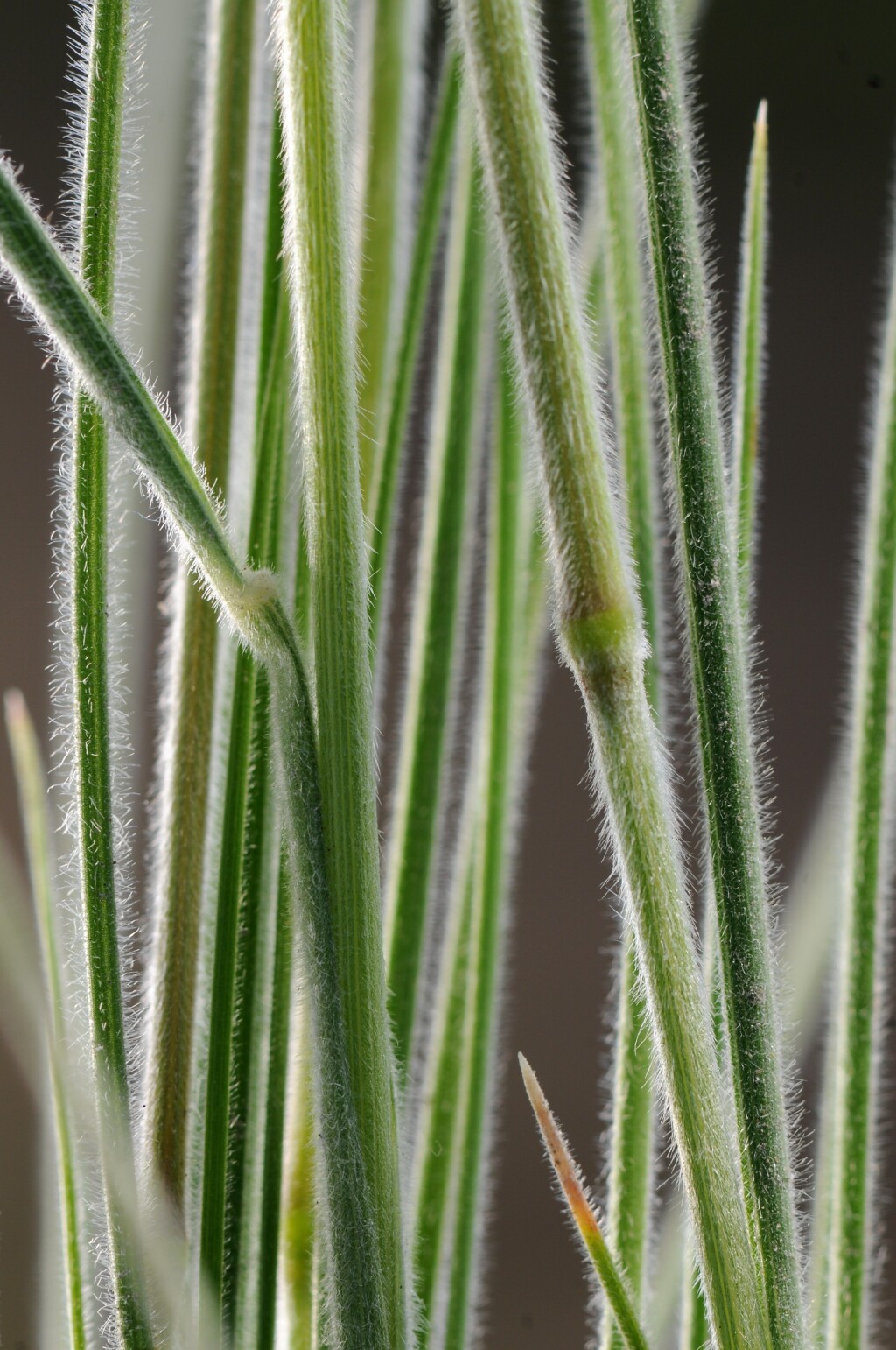Poa morrisii
VickeryTufted or shortly rhizomatous, pubescent perennial, culms ascending to erect, pubescent, to c. 90 cm high. Leaves generally rather weak, usually distinctly greyish; sheath mostly pallid, usually densely pubescent; blade flat, folded or weakly inrolled, to 25 cm long and 2 mm wide when flattened, lightly hairy to velvety with soft, spreading hairs up to c. 1 mm long and often overlaying a layer of shorter hairs, occasionally the hairs of one length only, to c. 0.5 mm and semi-appressed; ligule truncate, firmly membranous, densely ciliate, c. 1 mm long. Inflorescence an open pyramidal panicle, to c. 25 cm long and 15 cm wide. Spikelets 3–8-flowered, 2–6 mm long, green or purplish; glumes 3-nerved, c. 2 mm long, the upper slightly longer than lower, pubescent almost all over to scabrous along the keel only; lemma 5-nerved, 2–4 mm long, shortly pubescent in the lower part, with the hairs on the keel and lateral nerves often rather long; web absent or rudimentary. Flowers mostly Oct.–Nov.
Wim, GleP, VVP, VRiv, GipP, OtP, WaP, Gold, CVU, GGr, DunT, NIS, EGL, EGU, WPro, HSF, HNF, OtR, Strz, MonT, HFE, VAlp. Also SA. Widespread and locally common in southern Victoria, extending inland to, e.g., St Arnaud, Maldon and Warby Range. Usually associated with drier grassy woodland on poor, often rocky soils.
Specimens from different localities exhibit a wide range of variation in both length and density of indumentum and the degree to which the leaves are folded. In some areas more than one form may be present, but these are usually linked by intermediates. The common form on Silurian sediments in the outer eastern suburbs of Melbourne has the leaves very closely folded, and covered with very short, semi-appressed hairs.
Victorian specimens which in the past had been referred to P. crassicaudex and P. induta (the former distinguished by the common occurrence of swollen basal internodes and the latter by having the leaves covered by hairs of two distinct lengths), after re-examination have been determined variously as P. morrisii and P. sieberiana var. hirtella. These specimens possess no characteristics which are not present across the range of variation found in those 2 widespread Victorian species.
Walsh, N.G. (1994). Poaceae. In: Walsh, N.G.; Entwisle, T.J., Flora of Victoria Vol. 2, Ferns and Allied Plants, Conifers and Monocotyledons, pp. 356–627. Inkata Press, Melbourne.
 Spinning
Spinning

